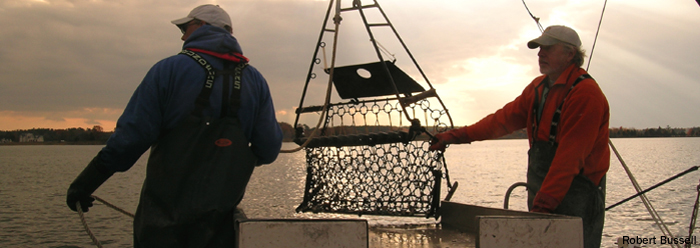Typically, the Annual Fall Oyster Survey visits over 250 discrete oyster bars with upwards of 350 or more samples taken. In addition to the Key and Disease bars, numerous natural oyster bars, sanctuaries, natural and hatchery seed planting, shell planting, and special project sites are sampled.

Samples are acquired by towing a 32 inch-wide standard oyster dredge. At each of the 53 Key Bar sites and the 43 Disease Bars, two 0.5-bushel subsamples are collected from replicate dredge tows. On seed production areas, five 0.2-bushel subsamples are taken from replicate dredge tows. At all other sites, one 0.5-bushel subsample is collected. Beginning in 2005, tow distances have been recorded for all samples (providing the dredge was not full) using the odometer function of a global positioning system unit, as well as the total volume of material in the dredge from which the subsample is taken. Sample acquisition and workup routines are as follows:
Sample Procedures

Representative samples of 30 oysters older than one year are taken at each of the 43 Disease Bar sites. Additional samples for disease diagnostics are collected from seed production areas, seed planting areas, and areas of special interest. Oyster parasite diagnostic tests are afforded by staff of the
Cooperative Oxford Laboratory. Data reported for
Perkinsus marinus (dermo disease) are from rectal Ray's fluid thioglycollate medium (RFTM) assays. Prior to 1999, the less sensitive hemolymph assays were performed. Data reported for
Haplosporidium nelsoni (MSX disease) have been generated from tissue histology since 1999. Before 1999, hemolymph cytology was performed, while histology samples were examined for
H. nelsoni only from selected locations.
